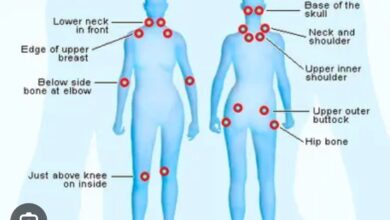AN INJECTION FOR HIGH BLOOD PRESSURE?

I bet you thought high blood pressure was just that—high blood pressure! Well, it is, but what the heck is it that makes a person have higher than normal arterial pressure? What it is is a chemical in the blood stream called angiotensin. Angiotensin is one of the components of the Renin-Angiotensin-Aldosterone System which, along with the Krebs Cycle, Pentose Shunt, and Cyclic adenosine monophosphate (Cyclic AMP), make the first two years of medical school difficult and confusing. The renin-angiotensin-aldosterone system (RAAS) has led many a struggling student to cry “uncle” while others find it fascinating and become nephrologists. I was among those who cried for help, but I paid enough attention to understand its significance in the pathophysiology of hypertension.
Angiotensin, or more specifically, angiotensin II, is an extremely potent vasoconstrictor, and as such, it causes the blood pressure to rise. It also stimulates our sympathetic nervous system, the “fight or flight” system of our bodies, that controls heart rate and blood flow at times of stress. Angiotensin II also tells our kidneys to retain salt (NaCl) and water and release potassium (K), and our pituitary gland, again, to retain water. All of these functions tend toward causing high blood pressure.
So what does all this have to do with this “shot” to control blood pressure? I’ll get to that in a minute. Angiotensin II is produced by a chemical reaction. The liver starts the production process by releasing Angiotensinogen into the blood circulation. Angiotensinogen is changed to angiotensin I by renin released from the kidney cells. Angiotensin I is changed to angiotensin II by a converting enzyme (ACE) produced by the lungs. Then angiotensin II goes to work on the receptors in blood vessel walls. If left unchallenged, angiotensin II will cause HBP bad enough to cause a stroke, heart attack, circulatory problems, and kidney failure.
Several drug classes used to treat high blood pressure were invented to counteract the RAAS.
Those drug classes are:
Direct Renin Inhibitors (Aliskiren): this drug blocks Angiotensinogen from becoming
angiotensin I
Angiotensin Converting Enzyme inhibitors (ACE-I) (lisinopril): blocks angiotensin I from
becoming angiotensin II.
Angiotensin Receptor Blockers (ARB) (irbesartan, Losartan): block vascular receptors from
the effects of angiotensin II
The new injectable drug is called zilebesiran. It is an RNA interference drug! It targets the production of Angiotensinogen by the liver. If Angiotensinogen is blocked (not produced), the entire RAAS system is blocked and blood pressure normalizes. The researchers claim zilebesiran suppresses about 90% of Angiotensinogen. A single dose of 600 mg of zilebesiran given subcutaneously (under the skin) reduces plasma Angiotensinogen levels by 95%-98% by week 2. Suppression of Angiotensinogen lasts for 6 months, and when given with other existing antihypertensives gradually lowers BP for the entire 6-month period. And BP is consistently lowered both during the day and at night.
The patient who will benefit from this treatment the most is either the one who has tried every available drug with no success, or the one who is on 4 or 5 meds antihypertensives and their BP is still not at goal. Zilebesiran has not had a problem with the BP dropping too low, nor has there been a build of potassium to dangerous levels. It does appear, however, that some patients will have as much as a 30% reduction in kidney function. But just having high blood pressure can do that.
So this is something internists, family doctors, and nephrologists can use to say they have something that will treat “refractory” hypertension.
References: O’Donoghue ML, Desai A. A shot in the Arm for Uncontrolled Hypertension: Novel Drugs and New Devices. Medscape 2024 Apr 15.
Fountain JH, Kaufman J, Lappin L. Physiology, Renin Angiotensin System https://www.ncbi.nlm.nih.gov/books/NBK470419/





Ah, yes, the infamous Krebs Cycle.
A pain in the arse!